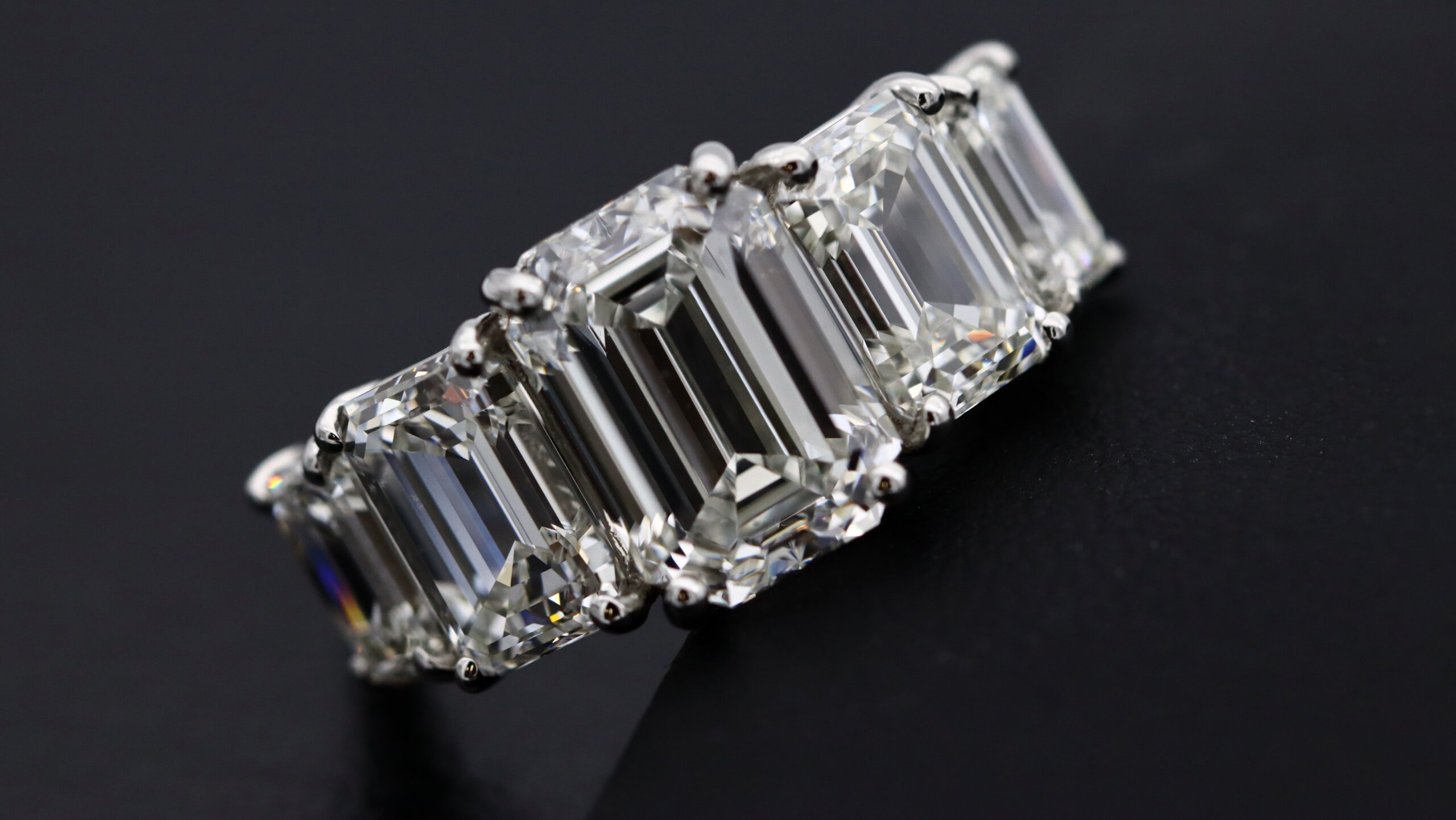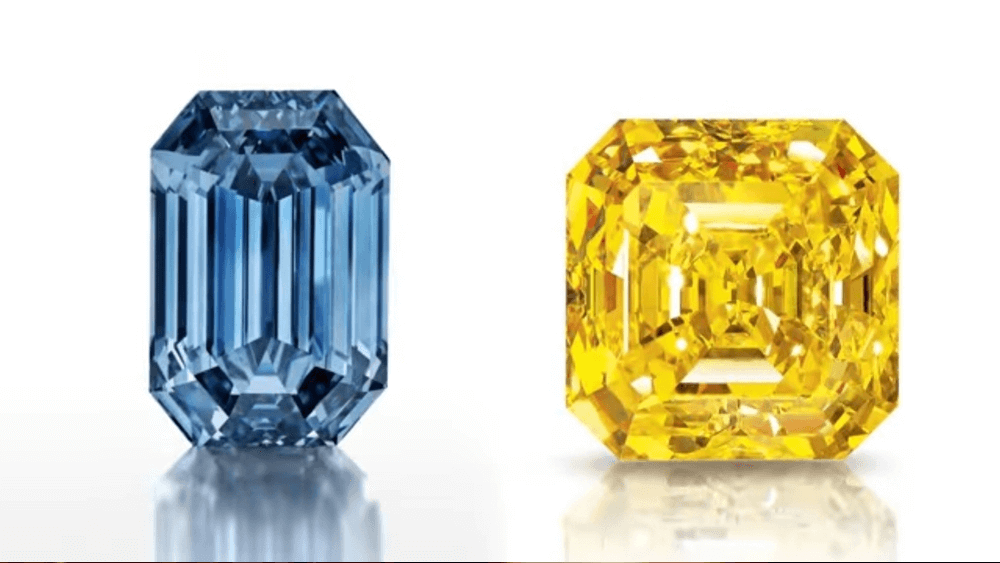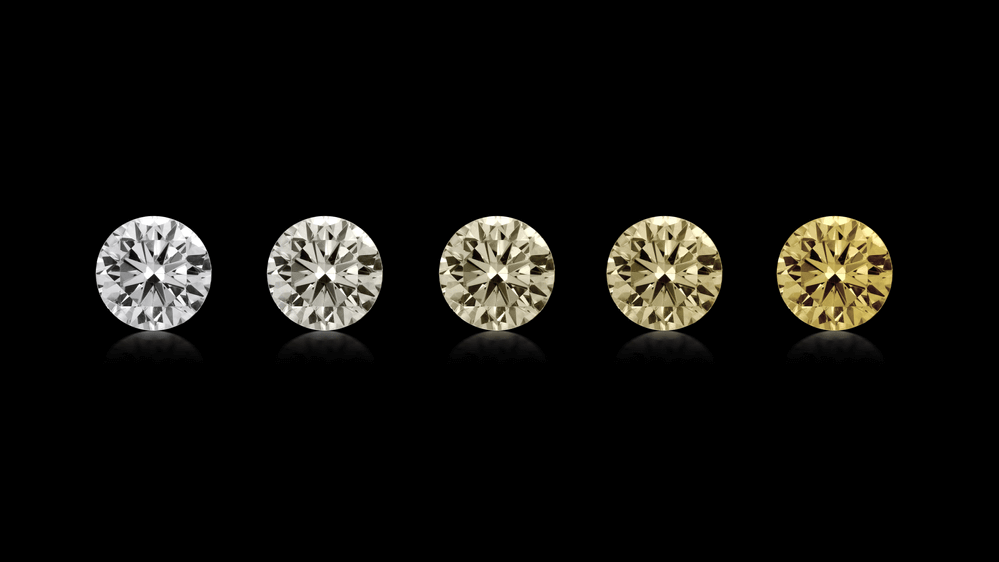Choosing D Color Diamonds: A Complete Guide

By Gary A.

Edited by Olivia H.
Published Sep 24, 2021
Edited on Dec 18, 2024
For those seeking the pinnacle of rarity and brilliance, D color diamonds represent the ultimate choice, but are they really worth the premium for your engagement ring?

- 6 Quick Tips for Buying a D-Color Diamond Engagement Ring
- Introduction to D-Color Diamonds
- D-Color Diamonds vs Other Grades
- D-Color Diamond Price Analysis
- Our Expert Take
- 8 FAQs
Before we dive deeper into the specifics, here are some practical tips to help guide your decision-making process:
6 Quick Tips for Buying a D-Color Diamond Engagement Ring
When selecting a D-color diamond engagement ring, there are several key factors to consider to ensure you’re making an informed decision. Here are practical tips to guide you through this process:
- Tip 1: Understanding the Color Grading Scale Grasp the Basics: Familiarize yourself with the GIA color grading scale. Remember, D-color diamonds are at the top of this scale, signifying the highest level of colorlessness. Compare with Neighboring Grades: Look at E and F color diamonds alongside D to understand the subtle differences and assess if the premium for a D-color is worth it for you.
- Tip 2: Setting and Metal Choice Metal Matters: Choose a setting that complements the D-color diamond. White gold or platinum are ideal as they enhance the stone’s colorless quality. Yellow or rose gold settings might impart a slight color to the diamond, which can diminish its D-color perception.
- Tip 3: Inspect Under Different Lighting Varied Lighting Conditions: Examine the diamond under different lighting settings, including natural light. D-color diamonds should maintain their colorless appearance across various lighting environments.
- Tip 4: Fluorescence Examination Check for Fluorescence: D-color diamonds sometimes exhibit fluorescence when exposed to UV light. While this can be a desirable trait for lower color grades, in D-color diamonds, strong fluorescence can sometimes create a milky or hazy appearance.
- Tip 5: The Impact of Diamond Shape Shape Selection: Certain diamond shapes can highlight or obscure color nuances. Round brilliant cuts, for example, can mask slight color variations better than step cuts like emeralds or Asschers. Choose a shape that maintains the integrity of the D-color.
- Tip 6: Visual Comparison with Lower Grades Side-by-Side Comparisons: Visually compare D-color diamonds with lower color grades to truly appreciate the difference. This can help in deciding whether the premium for a D-color diamond aligns with your aesthetic preferences and budget. While comparing it should be in a folded white paper when the table of the diamond is facing down and you have a side view of both diamonds.
Now that you’ve got these practical tips, use Jeweler AI below to find the perfect engagement ring that suits your style and budget:
Introduction to D-Color Diamonds
One of the biggest curveballs any first-time diamond shopper will have thrown at them is the fact that most diamonds – prized around the world for their perfectly symmetrical, clear, and bright appearance – are a pretty long way from actually being perfect.
In most cases, this doesn’t matter. Many imperfections exist only on the microscopic level – something that (as you may already know) enables a diamond to be referred to as ‘eye clean’, and further the notion that most diamonds are perfect.
But some diamonds are perfect – at least, they’re perfect according to the best and most reliable scales we have to measure them by the GIA’s scales for cut, clarity and, of course, color. The question is: are D-color diamonds worth it?
Using the letters D-Z ensures that the scale is easily differentiated from other, lesser scales, making it much easier for shoppers to recognise GIA-certified diamonds.
The GIA is not the only grading body out there, but it is by far the most widely used and trusted by jewelers, collectors, and first-time buyers. It is also considered to hold the most rigorous and consistent parameters for grading diamonds, ensuring a very reliable yardstick for buyers.
For this reason, the GIA opted to implement a different scale to the less reliable, less consistent scales used by other institutions. Beginning at D, the scale runs through several subcategories as follows:
- Colorless: D, E, and F
- Near Colorless: G, H, I, and J
- Faint: K, L, and M
- Very Light: N, O, P, Q, and R
- Light: S, T, U, V, W, X, Y, and Z
Only clear diamonds are graded according to this scale. Other diamonds are known as ‘fancy color’ diamonds and are graded differently.
Rarity and Value
You likely already know that diamonds are composed of carbon – although you might not realize that, during their development deep underground, many diamonds take on a yellow tint as a result of a small (or larger) amount of nitrogen. This may be enough to cause a very slight undertone within the stone or to make it appear very, very discolored.
Either way, a visible yellow cast is understandably seen as a dealbreaker for those looking for a center stone for their engagement ring.
As you’ve probably guessed, it’s impossible for a diamond cutter to ‘remove’ this nitrogen from the diamond, meaning that diamonds with no yellow tint are very highly coveted among collectors, since their chances of existing are very low.
This means that their value is pushed particularly high, even for diamonds – all because of their rarity.
D-Color Diamonds vs Other Grades
Objectively, the D diamond is the best you could ever hope to find – although it’s worth noting right now that, with D diamonds representing less than 1% of all diamonds out there today, actually ‘hoping’ to find one is probably a wasted effort for most of us. When it comes to diamond color D vs E or F, there is no visible difference. Compared with the other grades, it rarely represents a good investment.
Grades G – J, otherwise known as the Near Colorless grades, are the best place for most shoppers to start looking unless their budget allows them to stick to the Colorless grades.
We mentioned above how you’d have to go pretty far down the scale before you started to be able to detect a yellow tint for yourself, and even an F grade is still far too high for you to notice it.
This is why many shoppers prefer to stick to the Near Colorless category of diamonds, which are hundreds (if not thousands) of dollars cheaper than the Colorless grades, but still visually comparable.
G-color diamonds, for instance, are a great place to look if you want to find a diamond that appears colorless, but remains free from the premium cost associated with Colorless – and, particularly, D-grade – diamonds. Yes, they’re a lot more common than D-color diamonds, but, when it comes to buying an engagement ring, appearances are far, far more important than what’s printed on the GIA report.
Can You Tell the Difference Between D and F Diamond?
No, only a skilled grader will be able to notice any tangible difference between a D and an F diamonds – and even then they would require ideal lighting conditions and strong magnification.
F diamonds are still a part of that top color category, meaning that they are still considered to be colorless.
F diamonds are the most common of the Colorless diamonds, which means that they’re more affordable and slightly less coveted by collectors. However, sitting just two grades below D diamonds, they continue to fetch a price on the market, so you’re not going to find the best deal at this grade, either.
They can be a great compromise if you’re keen to stay within that Colorless range, but only if your budget can stretch to cover it. Diamonds don’t suddenly start looking yellow when you dip down a couple more grades.
D-Color Diamonds and Sparkle
So, where’s the payoff? Do D-color diamonds sparkle more? No – even a diamond that sits way down the color scale will sparkle beautifully, although its beauty will, unfortunately, be undermined by a visible brown or yellow tint.
To sparkle, a diamond requires an ideal depth and table, a good polish, and good symmetry. Brilliant cuts naturally sparkle more than step cuts, so, if you were to put a D-color Emerald cut diamond next to an I-color Round cut diamond, you’d notice a lot more sparkle coming off the I-color diamond.
Color is distinct from sparkle, so paying more for a higher color grade won’t afford you a better light performance – unless, of course, that diamond is cut to a higher standard, or in a more sparkly shape.

D-Color Diamond Price Analysis
You should expect prices to start at around $5,000, although, if you’re looking for a diamond that also features an excellent cut and an eye clean clarity grade, prices could easily surpass the $10,000 mark.
As the highest color grade out there, D diamonds are not only made more valuable by their appearance but by the prestige attached to them. Like FL and IF diamonds, D-color diamonds represent an incredibly unlikely occurrence in nature, and collectors are more than willing to pay a high price for them.
They will cost thousands of dollars more than diamonds belonging to the Near Colorless category, even if they are identical in every other aspect (cut, clarity, and carat weight).
Our Expert Take
The high cost of one of these diamonds – not to mention the difficulties you’ll face in tracking down a D-color diamond for sale – means that you’ll have to invest a lot of time and money into features that are, unfortunately, invisible.
Like Flawless or Hearts and Arrows diamonds, D-color diamonds are pretty fascinating, but their unique characteristics are typically only visible to skilled graders and jewelers – and, even then, only when those graders and jewelers have the proper lighting and equipment with which to see them.
When the diamond has been set within a beautiful ring and placed on the finger of your bride-to-be, those attributes will only be visible on paper – within the GIA report. A diamond of the same size, eye cleanliness and cut will look identical, and the thousands of dollars you invested into those invisible attributes will be as good as wasted.
8 FAQs
- Q: What makes D-color diamonds unique?
- A: D-color diamonds are the highest grade in the color grading scale, meaning they are completely colorless and exceptionally rare. Their lack of color enhances their brilliance and visual appeal.
- Q: How does the price of a D-color diamond compare to other grades?
- A: D-color diamonds typically command a higher price due to their rarity and demand. They are priced significantly higher than diamonds with lower color grades.
- Q: Are lab-grown D-color diamonds as valuable as natural ones?
- A: Lab-grown D-color diamonds are less valuable than natural ones due to their availability and production method. However, they offer a more affordable option while maintaining similar quality and appearance.
- Q: Why is GIA certification important for D-color diamonds?
- A: GIA certification ensures the authenticity, quality, and accurate grading of D-color diamonds. It is a trusted standard in the diamond industry that adds value and confidence in the diamond’s quality.
- Q: How do carat sizes and quality affect the value of a D-color diamond?
- A: Larger carat sizes and higher quality (in terms of cut, clarity, and carat) significantly increase the value of D-color diamonds. However, a balance between these factors is crucial for optimal value and appeal.
- Q: Is a D-color diamond a good investment?
- A: D-color diamonds can be a good investment due to their rarity and demand. However, the investment potential depends on market trends and personal financial considerations.
- Q: What is the difference between D-color and near-colorless diamonds?
- A: D-color diamonds are completely colorless, while near-colorless diamonds (grades G to J) have slight color that is difficult to perceive without comparison. The visual difference is minimal to the untrained eye.
- Q: Can the average person tell the difference between D-color and other high-grade diamonds?
- A: It is challenging for the average person to discern the difference between D-color and other high-grade colorless diamonds without specialized equipment and training.
Explore the world of D-color diamonds with Jeweler AI – your expert guide to finding the perfect gem with precision and confidence.
FOLLOW-UP GUIDE SERIES












